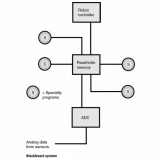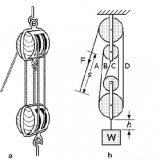Robotic Mechanisms – HELICAL Gears – 51036
Helical or “dry fixed” gears offer a refinement over spur gears. The leading edges of the teeth are not parallel to the axis of rotation, but are set at an angle. Since the gear is curved, this angling causes the tooth shape to be a segment of a helix. Helical gears can be meshed in parallel or crossed orientations. The former refers to when the shafts are parallel to each other; this is the most common orientation. In the latter, the shafts are non-parallel, and in this configuration the gears are sometimes known as “skew gears”.
The angled teeth engage more gradually than do spur gear teeth, causing them to run more smoothly and quietly. With parallel helical gears, each pair of teeth first make contact at a single point at one side of the gear wheel; a moving curve of contact then grows gradually across the tooth face to a maximum then recedes until the teeth break contact at a single point on the opposite side. In spur gears, teeth suddenly meet at a line contact across their entire width causing stress and noise. Spur gears make a characteristic whine at high speeds. Whereas spur gears are used for low speed applications and those situations where noise control is not a problem, the use of helical gears is indicated when the application involves high speeds, large power transmission, or where noise abatement is important.The speed is considered to be high when the pitch line velocity exceeds 25 m/s.
A disadvantage of helical gears is a resultant thrust along the axis of the gear, which needs to be accommodated by appropriate thrust bearings, and a greater degree of sliding friction between the meshing teeth, often addressed with additives in the lubricant.
Helical Gears Properties : a bar or rectangular gear (flat, no curvature) having straight teeth cut on the face, perpendicular to the axis of motion
» Spur gear teeth “curved”, teeth are cut at an angle
» Designed to transmit motion & power between either parallel or right angle shafts (90°, non-intersecting), which rotates in the opposite direction
» Durable & ideal for high load applications
» Plastic, brass, steel, & aluminum are the materials generally used for manufacturing
» Automobiles, elevators, conveyors, compressors & blowers are just a few everyday machines where helical gears are used
» Helical gears are also used in machine tools, turbine drives, feed drives, sand mullers, rolling mills & marine applications
HELICAL Gears TECHNICAL DETAILS
Download This PDF – 51036-Helical-Gears-Technical-Details.pdf
Crossed Helical Gears




